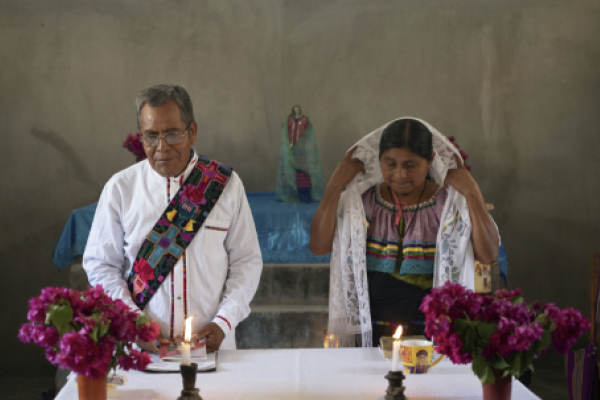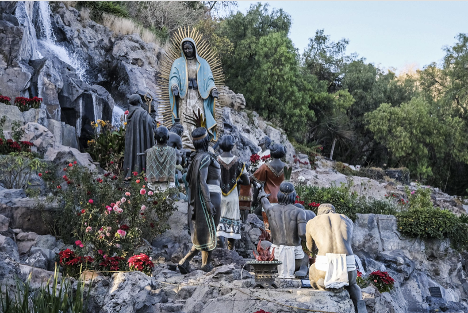Indigenous Christians of Latin America and Their Unique Faith

Across Latin America, Indigenous communities have woven Christianity—especially Catholicism—into the fabric of their spiritual and cultural lives. Far from being passive recipients of colonial religion, Indigenous peoples have actively shaped and reinterpreted Christian traditions, blending them with ancestral beliefs, rituals, and worldviews. This unique synthesis reflects centuries of resilience, adaptation, and resistance in the face of conquest and cultural imposition.
Christianity in Latin America did not have pleasant origins and it is important to note the experiences of what Indigenous people of the past have faced. Early years of the Spanish Conquest were extremely brutal and many indigenous communities were persecuted for their resistance. Spanish missionary priests traveled to “civilize” the people so they could fit into proper society. Many were forced to convert to the Catholic faith to avoid violence. While the Spanish wanted full acceptance and abandonment of past religion, for many this conversion was not a simple yes or no.
Indigenous people have learned to mix their cultural practices with Christianity. One key practice that they maintain is their respect and reverence for the Earth and its inhabitants. They strongly believe in not taking too much and knowing that there is a balance between humans and animals. Additionally, many keep practicing their traditional medicine. They believe in certain ways of life that nurture the human body and spirit that have guided them for centuries. While these might seem minute, these small differences help them stay connected with their culture.

A popular example of the syncretism of Indigenous and Christian beliefs is La Virgen de Guadalupe in Catholicism. The shrine built in Tepeyac was built on ruins of another shrine for Aztec goddess Tonantzin. Tepeyac was also a city where she had been revered. This became a popular pilgrimage site and eventually the two religious images blended into one.
Even in the Church settings, many indigenous practices stay with them. For example, there is a Church in Totonicapán, Guatemala that is built upon the ruins of a pre-colonial temple and maintains an indigenous altar where people make offerings before Church. There are also other practices within this church specifically that might look Catholic but closely resemble old Mayan practices.
Looking at the present, Indigenous Catholics are a small group but still want to be respected and involved as part of the Catholic community. Indigenous Catholics have requested the Church’s help in gaining respect from authorities in the past few years. During the late Pope Francis’ visit to Bolivia in 2015, he sought forgiveness from the indigenous people for the crimes the Church committed during the Conquest of the Americas. This was a historic moment for many indigenous people and built a path forward to reconciling the relationship between the Church and the Indigenous people. However, with the appointment of the new Pope Leo, many are hoping he continues on the same path Pope Francis did.
Pope Francis was an advocate for the protection of Mother Earth. During his tour of South America, he advocated for a better economic system that uplifts the poor and respects the planet, rather than one that exploits vulnerable communities and degrades the environment. This cause is close to the hearts of Indigenous people and they felt they could resonate with his message. Additionally, he also has led a wider path for the Church in involving and appreciating Indigenous practices in Mass. When he visited Chiapas, Mexico in 2016 he held a mass that included translations in several indigenous languages such as Tsotsil, Tseltal, and Ch’ol. This was the first time in half a century that the Vatican let Mass be held in a language other than Latin. He had also allowed Mayan rituals during mass, which he had also set precedent for when he allowed indigenous practices during a Mass in Congo for the first time.
The relationship between Indigenous communities and Christianity in Latin America is complex and layered. What began as a forced imposition has, over centuries, transformed into something far more nuanced—a spiritual landscape where Indigenous voices have not only survived but reshaped the faith to reflect their own identities and values. Today, Indigenous Catholics continue to walk a path of both tradition and transformation, seeking to preserve their heritage while participating meaningfully in the broader Church. As the Catholic Church slowly opens its doors to more inclusive and respectful engagement, there remains hope that the voices, wisdom, and sacred practices of Indigenous peoples will not only be heard but honored.
Story written by CLAS Summer 2025 intern, Rina Smith, an undergraduate student in International Studies & Spanish.
Image sources: 1 (mass) and 2 (Virgen de Guadalupe)
